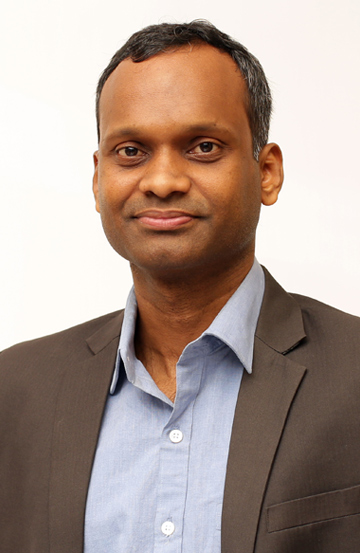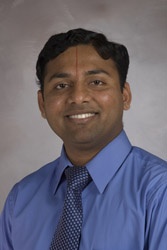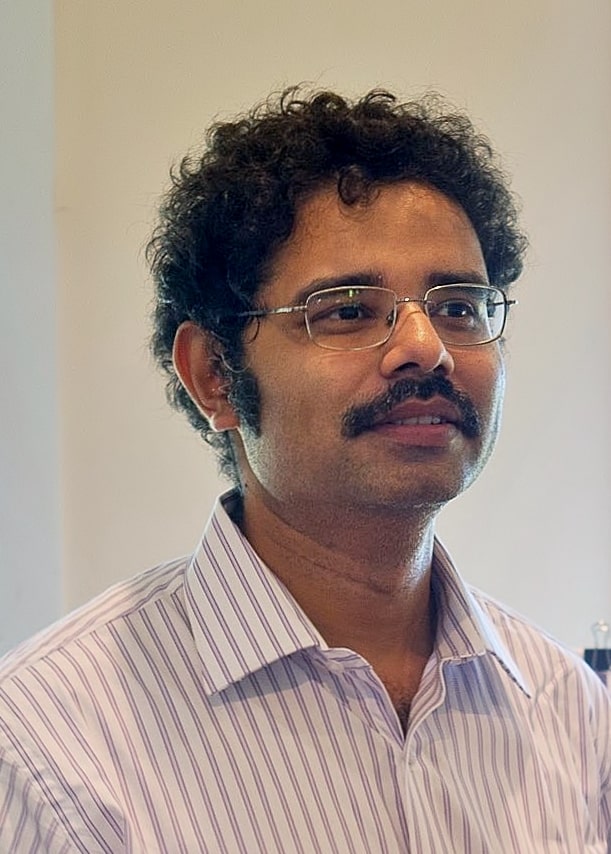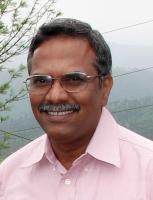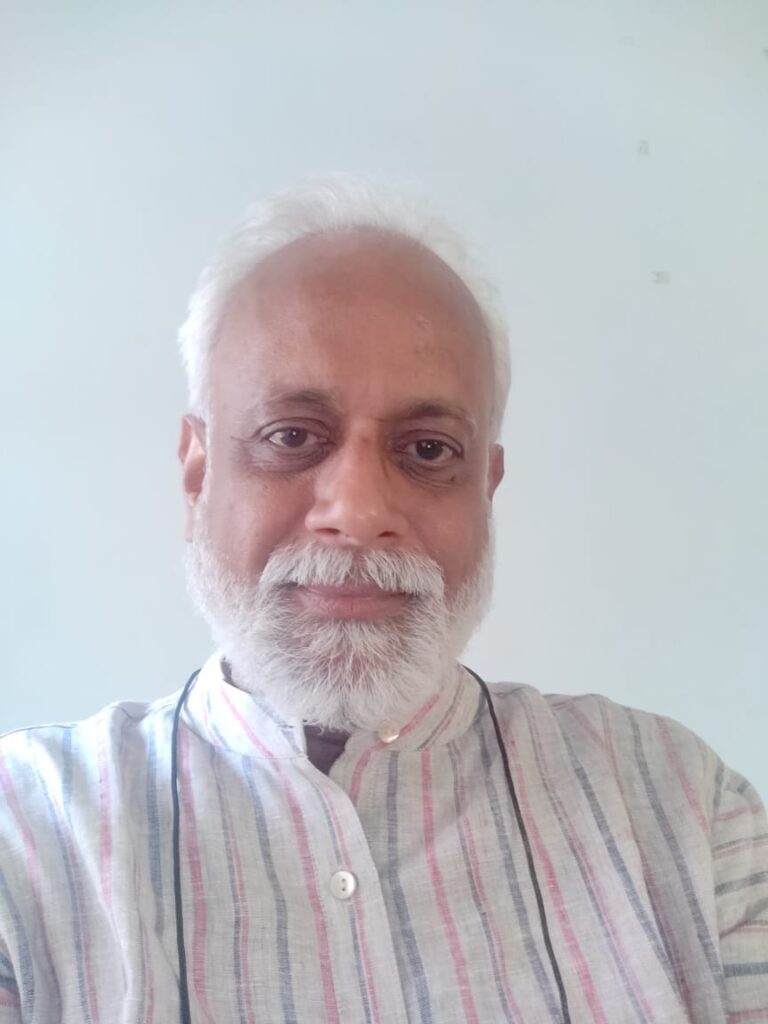Project
Advanced technologies for early & non-invasive vascular health assessment:
Non-invasive diagnosis of highly impactful early vascular markers have not transitioned from clinical research to practice despite the clinical knowledge that early diagnosis and intervention can reverse vascular condition. Till date, there is no clinical technology for reliably and accurately measuring all the early vascular health markers: a) endothelial function, b) carotid arterial stiffness and aortic stiffness estimated by carotid-femoral pulse wave velocity, and c) central aortic BP. We are tackling a key research challenge to non-invasively estimate pressure-dependent material properties of the arterial wall, independent of patient/population-specific calibration, which is unsolved till date.

Wire-free, multi-modal non-contact physiological sensing and monitoring:
Can a human’s vital physiological parameters, key to ‘patient monitoring’ be accurately and reliably measured over time, without wires between patient and monitor? This is the fundamental question physiological sensing research community has tried to tackle for over a couple of decades. While wireless technology has made devices smaller and ‘wearable’, tethering interface still exists. While non-contact sensors have matured, measuring vital parameters reliably and accurately has not been achieved. Solving this problem will have a fundamental, wide-ranging impact across healthcare sector, with over a million patients needing monitoring every day in the world.

Intelligent image guided surgery:
Two key fundamental questions in this field are, a) How can a robotic surgery be planned accurately and executed safely adapting to variations in patient, surgeon, and surgical environment? b) How to handle intra- operative variations even if pre-operative data is embedded? Key research problems to be solved to advance image guided surgery technology are robust navigation and visualization technologies that work with general purpose robots, accuracy of positioning and servo-control under uncertainty, motion and breathing compensation, registration and tracking without markers, robot articulated intraoperative imaging.


IITM’s Healthcare Technology Innovation Centre (HTIC) is a leading med-tech centre in the country with a unique combination of R&D, innovation, clinical validation, technology commercialization, incubation and entrepreneurship. The centre has 80+ research and engineering staff, 40+ PhD and MS scholars, and 7 IITM faculty collaborating with clinicians and industry. The centre has successfully translated technologies into six commercial products in market till date. This IoE project will leverage HTIC’s success and strength and step up significantly on the global scene through collaboration with globally leading research groups in 6 countries and deliver high-impact publications, global patents and products.
The three focus areas for this IoE project, the key scientific and technical gaps the project addresses are described in detail.
Advanced technologies for early & non-invasive vascular health assessment:
It is clinically well established that vascular damage in terms of loss of endothelial function and increased arterial stiffness, arteriosclerosis, leading to raised central aortic blood pressure (BP), occurs decades before more commonly recognised cardiovascular events like atherosclerosis, plaque rupture and ischemic heart attacks. Early diagnosis and intervention at this stage can reverse vascular condition. However non-invasive diagnosis of such highly impactful early vascular markers have not transitioned from clinical research to practice. This is due to the requirement of high-end ultrasound imaging with complex post-analysis steps and expertise required to perform accurate measurements making such tests laborious. Till date, there is no clinically usable technology that can reliably and accurately measure all the clinically established early vascular health markers: a) endothelial function (elemental function key to homeostasis of the cardiovascular system), b) carotid arterial stiffness and aortic stiffness estimated by carotid-femoral pulse wave velocity (marker of vessel wall properties and dynamics), and c) central aortic BP (measure of cardiac load). It is important to note that the brachial blood pressure (typically expressed as 120/80 mmHg) is a measure of convenience and reflects peripheral vascular health and is starkly different from the aortic pressure (typically 100/80 mmHg), whose pulse pressure is lower and is the real early indicator of cardiac load and end-organ damage.
Literally every research effort estimating central aortic BP and vascular stiffness starts with the classic Bramwell-Hill equation, put forward in 1922, that relates pressure and pulse wave velocity (PWV). However, researchers ignore the highly simplifying assumptions used in the B-H equation which is valid only for a straight, thin-walled elastic tube with no bifurcations and wave reflections – none of which is true of the human vascular system! As a result, accurately estimating arterial stiffness and central BP remains an unsolved problem. The arterial walls are multi-layered, and hyper elastic, with a non-linear pressure dependent elastic modulus that is defined by the vessel wall structure and appropriately regulated by autonomic nervous system with endothelial function modulation, to make the vessels more compliant or stiff as required by the body, in response to various physiological conditions. Hence the often reported PWV calibration-based BP estimation does not work as the human body dynamically alters vessel wall material properties to maintain a dynamic equilibrium for homeostasis, thereby making the calibration coefficients inaccurate.
In this context, the key research challenge is the non-invasive estimation of the pressure-dependent material properties of the arterial wall, without using patient/population-specific calibration functions, which is unsolved till date. Solving this problem to create a clinically usable technology requires interdisciplinary expertise involving engineering, biophysics, cardiovascular physiology, animal experiments and clinical studies. The interest and potential impact of such work in advancing cardiovascular biomedical science and technology is evident through dedicated conference sessions and journal issues on this topic in the past few years.. It is important to note that our group already has global leadership in this research area which we will leverage significantly in this proposal. CVDs being the largest cause of premature deaths worldwide, the impact and visibility of such commercially successful technologies will be invariably global in its effect.
Wire-free, multi-modal non-contact physiological sensing and monitoring:
Can a human’s vital physiological parameters, be accurately and reliably measured over time, without wires between a patient and monitoring device? This is the fundamental question physiological sensing research community has tried to tackle for over a couple of decades. While wireless technology has made the device smaller into a ‘wearable’ form factor, the tethering interface still exists. Wire-free or non-contact measurement of vital physiological parameters is an unsolved problem in biomedical sciences and no practical technology has yet been delivered. As a result, it is a very active research area globally, including participation from large industry players.
While non-contact sensors have matured, the core objective of measuring the vital parameters reliably and accurately has not been met, solving which requires significant R&D and experiments connecting sensors, physiology, devices and algorithms. Solving this problem will have a fundamental, wide-ranging impact across healthcare sector, irrespective of the field of medicine, with over a million patients needing monitoring every day in the world. A reliable ambulatory monitoring would make home healthcare feasible and scalable, to reduce healthcare costs, which is today limited due to lack of reliable and unobtrusive patient monitoring systems. It will be a game-changer in neonatal monitoring, where wires are one of the biggest sources of infection in NICUs and causes damage to fragile skin of babies. Over 2 million babies need neonatal hospital care in India annually.
Intelligent image guided surgery:
Image guided robotic surgery, is technically a ‘computer’-assisted surgery involving real-time correlation of the surgical environment to pre-operative imaging data to track, locate, and guide surgical tools in relation to the relevant critical anatomy during surgery. Two key fundamental questions in this field are, a) How can a robotic surgery be planned accurately and executed safely adapting to variations in patient, surgeon, and surgical environment? b) How to handle intra-operative variations even if pre-operative data is embedded? Adoption of robotic surgery has accelerated in recent years as the technology enables performance of complicated procedures like spine and brain safely and minimally invasive, improving quality and efficiency of procedures. As a result, this area has become a frontier medical technology globally with very active publishing and patenting. From commercial standpoint, image guided robotic surgery is one of the most active start-up areas. It has become a key strategic technology for leading med-tech companies worldwide as evidenced by increasing patenting and acquisition.
The key barriers for widespread adoption (only 1,000 image guided surgical robots installed worldwide) are high cost ( 1 million US$) and its context-unaware nature, capable of only specific surgery procedures it is designed for, making it impractical to scale beyond first adopters. Key research problems that need to be solved to advance currently available image guided surgery technology are robust navigation and visualization technologies that work with general purpose robots, accuracy of positioning and servo-control under uncertainty, motion and breathing compensation, registration and tracking without markers, robot articulated intraoperative imaging.
In each of the three focus areas, the project will conduct the following activities:
Scientific research to solve the key gaps and challenges (leading to joint scientific publications)
Technology development to create novel platforms, technology demonstrators and devices (leading to products, international patents and joint engineering publications)
Clinical validation and clinical research (leading to joint clinical publications)
Technology commercialisation/licensing (leading to commercial, societal impact and global visibility)
A detailed project work plan of these elements built around each focus area is provided below.


Expected deliverables of the research
Focus area | Scientific, Technology and Clinical Innovations |
Advanced technologies for early & non-invasive vascular health assessment
| - Non-linear arterial tube-load model accounting for non-linear hemodynamic and robust to artefacts that corrupt blood pulse propagation - New vascular diagnostic technologies for endothelial dysfunction, vascular stiffness and central aortic BP - Animal and clinical experiments in cardiac surgery wards and ICUs using our technologies - Cross sectional clinical studies and large-scale epidemiological studies (phase-1) and multi-year longitudinal studies (phase-2) yielding valuable data |
Wire-free, multi-modal physiological sensing and monitoring | - Context aware, Intelligent fusion of multi-modal near-field sensing (non-contact but close to body) and far-field sensing (cameras, UWB etc) to tackle reliability of unobtrusive monitoring - Learning based methods for sensor fusion (instead of heuristics) optimised for multiple applications such as neonatal, hospital and home monitoring |
Intelligent image-guided surgery | - Intelligent navigation system integrating external and on-robot sensors for real-time tracking of intra-operative variations of patient anatomy and surgical field, leading to faster surgery, reduce radiation exposure and improved safety. - Integrated imaging-based guidance with breath and organ movement compensation and ppredictive modelling (path, energy, optimal target) based planning and navigation |
Current status
Collaborations
International Collaborations
Prof. Steffen Leonhardt, RWTH Aachen link
Prof. Alberto Avolio, Macquarie University link
Prof. Dick Thijssen, Radboud UMC link
Dr. Koen Reesink, Maastricht University link
Prof. Ramakrishna Mukkamala, University of Pittsburgh link
Prof. Aaron Fenster, Robarts Research Institute link
International education programs
- Workshop on Wire-Free, Multi-Modal, Non-Contact Physiological Sensing and Monitoring April 7th - 20th, 2021
- link
Societal impact
Healthcare is one of the most socially impactful areas, due to its direct and immediate benefit to human beings. HTIC has already demonstrated this social impact through its technology translation of R&D into six commercially successful products. Key highlights are:
Mobile Eye Surgical Unit, MESUTM, a first-of-its-kind technology in the country, has conducted 15,000+ surgeries in over 100 rural locations and continues to operate in remote areas of country.
“3nethra”, an affordable eye examination device by Forus Health, for early screening of eye diseases, has conducted 5 million eye examinations worldwide through 2500+ installations in 26 countries
“3nethra neo”, neonatal eye examination device, primarily for detecting Retinopathy of Prematurity (ROP) in premature babies has reached 171 installations in 9 countries with over 120,000 screenings.
“iQuant” the country’s first indigenous point of care instrument for quantitative immunodiagnostics, has reached 450+ installations in tier-2 locations and expected to reach over 1000 labs, with over a million patient tests annually.
All three focus areas of this IoE project are aimed at improving the access to healthcare by reducing cost, technical complexity and expertise required to perform the procedure, and hence are scalable for larger social impact.
Sustenance statement
HTIC has a proven track record of being a sustainable centre for 10 years, by raising around Rs. 120+ crores after initial DBT investment of Rs. 6 crores in 2011. HTIC is often cited at IITM and funding circles as an example of how to successfully create sustainable R&D centres in med-tech area, that scale beyond the initial grant. In particular, it has had outstanding success in getting industry funding of over Rs. 50 crores, a first in the country in health tech area, which is widely considered very hard to get industry funding for, due to its interdisciplinary nature, long gestation periods and multiple stakeholders.
HTIC will bring in co-funding of Rs. 60+ crores from industry and other sources over next five years to support the R&D activities described in the work plan, making this IoE project a highly productive R&D enterprise.

